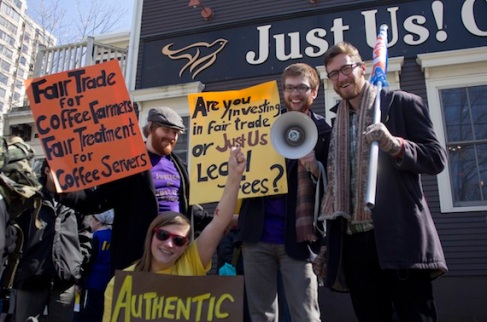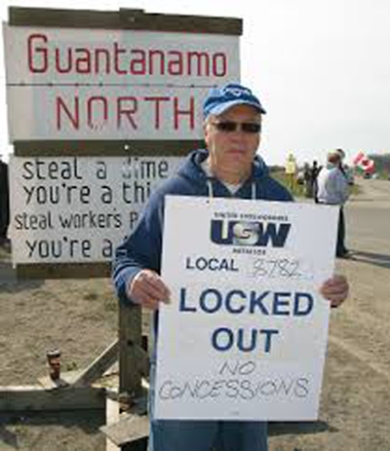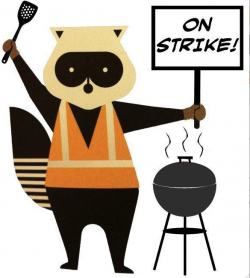In Ontario the Conservative Party has made it clear that if it wins the next election it will make a major move against the trade unions. It knows that the organized working class has the power, working along side community allies, to thwart its attempts to create a low wage economy and decimate the social safety net. That’s why labour is on its hit list.
The working class and the poor are continuing to take a battering from ruling class assaults. Many activists in the unions decry the lack of action by the leadership, some comparing the general strikes that we are seeing in Greece, India and other countries to concession contracts that workers are often being forced to accept in Canada.
While the level of mass struggle is not the same, we can not allow demoralization to take over. If you look at the broader context in North America, we have seen the Wisconsin fight back which inspired workers everywhere, the Occupy movement, the magnificent Quebec student strike, Idle No More and the victory of the Chicago teachers against a city government which was hell bent on closing schools and punishing the union.
Though in many instances rank and file workers lack the confidence and the level of organization to fight back on their own, we have seen examples of workers refusing to accept the attacks and claw backs in Ontario. The 1,000 Steelworkers locked out at US Steel refusing to accept concessions, the Porter Airline workers who went on a long strike over decent wages and health and safety protection, the Toronto Plaza Hotel workers walking the line for three months. In Quebec over 50,000 took to the streets demanding changes to EI.
We have to understand the situation in which we find ourselves and we have to continue to build the actions where workers are fighting back. We have to develop solidarity amongst workers in different sectors and make sure those who stand and fight know that they are not alone. A win against the assaults can inspire others to take action as well. One never knows in a period like this when a broader fight back can take place.
The unions are well aware of the Tory plans and trade union organizations such as the Toronto and York Region Labour Council have made a priority of organizing against the potential attacks. A meeting of over 700 activists went through the arguments that the Torys are intending to use, assessed the situation in their own workplaces and set out plans to have face to face meetings with every member.
Because the unions are fighting for their very survival, many have recognized that they have to take the necessary steps to reconnect with their members. This creates the potential of rebuilding our unions from the bottom up. It creates a situation that allows activists to talk on a day to day basis with their fellow workers about what a member controlled union would look like. This process can give the rank and file the confidence to push their unions in the direction that best serves the members.
Today it is critical that an understanding of a rank and file strategy be part of any fight back. Leaders often feel it’s easier to compromise and make a deal than lead a militant struggle against concessions. They are a layer that exists between management and workers and we can’t depend upon them. Workers have to organize among ourselves to take the initiative and demand a militant response. Leaders will often run to the front when they feel the pressure from below.
We can examine how the Chicago teachers union mobilized over a number of years to build itself into a fighting force with the majority of members and the community involved actively involved. Activists prioritized meeting the members one on one and setting up structures at every workplace to move the struggle forward.
We saw that in Greece smaller local unions with an activist base first began the actions against austerity. Trade union leaders were hesitant to move against the social democratic Pasok government. Small walkouts spread from workplace to workplace as workers gained confidence. This preceded the large general strikes.
The workers rights campaign in Ontario gives rank and file activists the opportunity to connect face to face with their fellow workers about what their union could be and how they can fight back against the attacks. It gives workers the possibility of renewing their local unions from the bottom up with an active and involved membership. Militants have to take advantage of this opening and actively connect with their fellow workers and build rank and file networks in their workplaces that will have the confidence to fight back and win.










